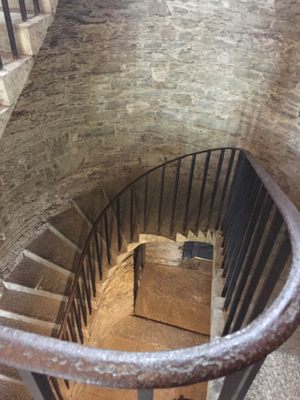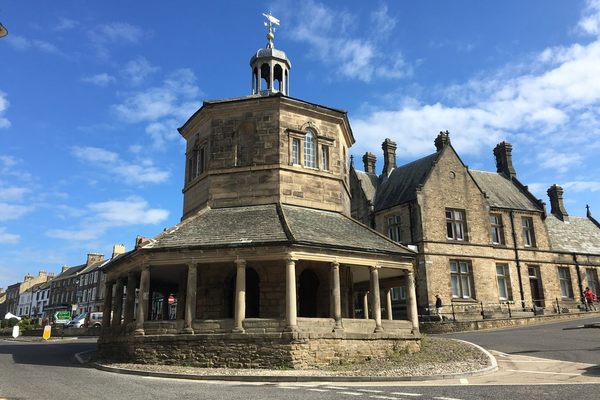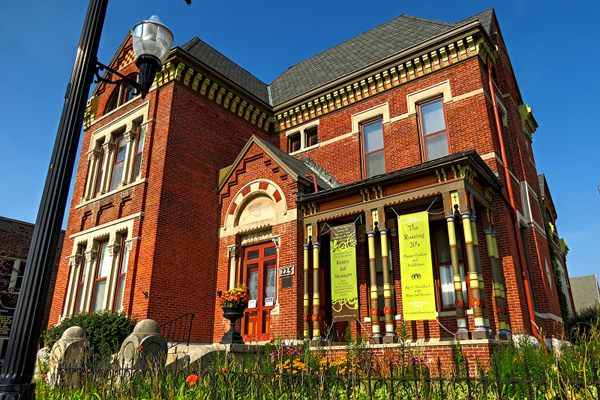About
Nestled on the hills north of Cork's bustling city center sits the early 19th-century Cork City Gaol. Little visited, the jail is a remarkable gem of Irish and European history.
Building began in 1818, when local government officials hired the British Deane family to build the jail. Elizabeth Deane, who had inherited the firm after the death of her husband in 1806, oversaw the project. Her eldest son, Thomas Deane, was the project's contractor, and her son-in-law, Richard Notter, oversaw the day-to-day building of the jail.
When it opened in 1824, the new jail replaced Cork's old prison, which had become overcrowded and fallen into disrepair.
The new jail at first housed male and female prisoners; many of whom were shipped to Australia on convict ships. Children were also imprisoned there. Wax models throughout the museum show the harsh treatment of children and adult prisoners. In 1878, the jail became a women’s only prison.
The modern museum traces the jail's history through those who worked and were imprisoned there. Visitors learn about Doctor William Beamish, who cared for the jail's prisoners. They'll visit the Governor of the Gaol's offices, and learn about the only Irish Catholic man to run the jail, John Barry Murphy.
Murphy was appointed in 1856 and ran a small staff of 23. As Governor of the Gaol, Murphy received a good salary providing him and his family a far more comfortable life than many Irish people at the time.
In the second half of the 19th century, during Murphy's tenure, most prisoners were poor, often turning to crimes such as petty theft, bad behavior, indecency, and alcohol intoxication out of desperation.
In December 1850, Cork-born Mary Sullivan was convicted of stealing a quilt. Having already been convicted of theft twice before and completed two six-month stays at Cork City Gaol, 16-year-old Sullivan was sentenced this time to seven years in Van Diemen's Land (modern-day Tasmania).
Another prisoner was Thomas Raile, who had been convicted of stealing books and spent his jail sentence in solitary confinement. The con artist James Burns was imprisoned here after falsely posing as the son of an important army officer to get new clothes for himself. Burns almost evaded arrest and was caught just before the 10:10 train to Dublin with his stolen goods. Another prisoner, Edward O’Brien, a well-known pickpocket, was only nine years old when he served his sentence.
Perhaps the most famous former resident of the jail was Constance Markievicz. Countess Markievicz, as she's often referred to, was an Irish revolutionary and the first woman to be elected to the Westminister Parliament.
Markievicz spent time in at least five different Irish jails. In June 1919, she was imprisoned at Cork City Gaol for sedition. Markievicz wrote that Cork City Gaol was "the most comfortable jail I have been in yet." We can only imagine how grim the others were.
Visitors to the museum can see the warden's rooms, which weren't much better than the prisoners' cells, and a chart that tracks the evolution of the jail's food menu.
The jail, or "gaol," as it is still called, a word with Old English roots, closed in 1923 following the Irish Civil War. Irish writer Frank O’Connor was one of the final inmates of the jail before its closure.
In 1927, the top floor of the Governor’s house became a broadcast station for Cork's first official radio station: 6KC. Later, a national radio station took over the broadcast and continued to transmit from the former prison until the 1950s.
Several ghosts are said to haunt the jail today.
The museum offers an immersive experience that traces the prison's history from its building, operation, and closure to its radio history to its reopening as a museum.
Don’t forget to grab a coffee from the gift shop and walk around the premises to see the rest of the structures (the prison hospital, the debtor jail, and the kitchen, all in various states of decay nowadays) and also see a good view of Cork.
Related Tags
Know Before You Go
The jail is about a 30-minute walk, uphill, from the city center. Public buses also run to the jail. The nearest station is about a five-minute walk. The jail's guided tour is very informative.
Published
March 12, 2024
































































